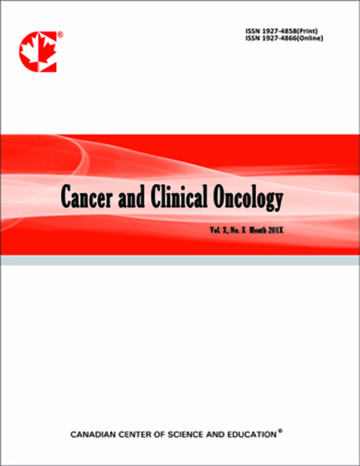HPV and methylation indicators in paired tumor and saliva in HNSCC
- Josena Stephen
- Kang Mei Chen
- Meredith Mahan
- George Divine
- Tamer Ghanem
- Maria Worsham
Abstract
Human papilloma virus type 16 (HPV16) is a causative agent for some head and neck squamous cell carcinoma (HNSCC) and an independent risk factor for oropharyngeal SCC. The goal of this study was to examine HPV16 associated gene methylation in paired saliva and tumor DNA with assessment of the sensitivity, specificity, positive predictive, and negative predictive value for saliva HPV as a test for HNSCC. HPV16 status was determined by quantitative PCR (qPCR) in 35 primary HNSCC paired tumor and saliva specimens. Tumor cut points >=0.03 and >=0.1 and saliva cut points >0 and ?0.001 were used to classify results as HPV positive or negative. Aberrant methylation was determined by the methylation-specific multiplex ligation probe amplification (MS-MLPA) assay. The frequency of promoter hypermethylation in tumor samples was 66% (23/35) versus 17% (6/35) in saliva. Two of 35 paired tumor and saliva samples had commonly methylated genes. HPV and methylation were correlated for IGSF4 (p=0.01) in tumor samples (cut point ?0.03) and for ESR1 in saliva samples (cut point >0). Although the sensitivity of HPV detection in saliva was significantly reduced when saliva cut points were increased from >0 to >=0.001, the specificity and positive predictive values were 100% at saliva cut point of >=0.001, regardless of tumor cut points. Within clearly defined parameters, HPV detection in saliva DNA shows promise as a non invasive approach for tumor HPV status. Methylated genes detected in saliva may be useful in early detection and as potential predictive markers of HNSCC. Further confirmation and validation in larger cohorts is required.
- Full Text:
 PDF
PDF
- DOI:10.5539/cco.v2n2p42
Journal Metrics
Google-based Impact Factor (2018): 3.94
h-index (August 2018): 8
i10-index (August 2018): 6
h5-index (August 2018): N/A
h5-median(August 2018): N/A
(The data was calculated based on Google Scholar Citations. Click Here to Learn More. )
Index
Contact
- Lexie GreyEditorial Assistant
- cco@ccsenet.org
